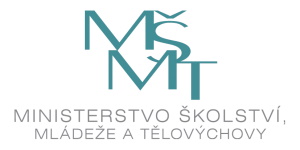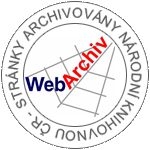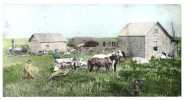Indian Hobby In the Czech Republic
Pre-1880
First reports on inhabitants of the Americas were brought shortly following its discovery by Columbus in 1492 by means of Latin-written missionary reports and travel books. After the lost 30-years war (1618-1648) the former Czech Kingdom was incorporated into Austrian Empire and population was subjected to strong recatholization after a period of thriving reformation activities. One of the non-catholic churches forced to leave were Moravian Brothers (Moravia is a part of Czech Kingdom) who established themselves as missionaries among the natives in the New World and remain to be one of the strongest First Nations churches in present Canada. In their homeland, the Native Americans, as other non-European nations, were mostly viewed as barbaric heathens who occupied land destined for bringing in culture and civilization. Natives themselves were to be freed from their pagan believes and deities and taught how to enter the Gardens of Eden and the arms of a single true God. Several Czech missionaries and a handful of travelers visited the Americas in the 18th and 19th centuries. From the half of the 19th century an increasing current of emmigrants flowed to America, where, beside Czech communities in the East, new settlements were established, especially in Illinois, Nebraska, Kansas, Texas and the Dakotas, where people were in direct contact with local native tribes (Sioux, Pawnee, Osage, Kiowa,…).
From cca 1840 on loads of glass beads have been produced for the foreign market and were extensively used in Native American beadwork. The "Czech", "Czechoslovakian" or "Bohemian" beads are different words for the same thing.
Turn of the 20th century - 1918 (independent Czechoslovakia was formed following the 1st world war) - 1939
Romantic period changed the image of a barbaric and wild picture of American Indian into the "noble savage", especially under influence of Longfellows poetry, Cooper´s works and, in Europe enormously popular, novels of German writer Karl May who all inspired local artists and poets, e.g. J.V.Sladek, Mikolas Ales, Antonin Dvorak and others. The most famous of Czech anthropologists in the field, A. Hrdlicka, succesfully fought in the U.S. for the concept of Native Americans as descendants of Asian hunters who came to America over the Bering Strait
Several noblemen travellers collected Native American objects for their curio cabinets: e.g. prince Ferdinand d´Este at the Konopiste castle (collection mostly lost after communist overturn in the 50´s) and Josef II Colloredo-Mansfeld at the Opocno Castle. The first Czech anthropological museum, the Naprstek Museum, was founded in 1862.
Other source of inspiration was the Boy Scouts movement led by British sir Baden-Powell and American E.T. Seton. The latter left the Boy Scouts after some time because of disagreement with the line of Boy Scouts of America followed to establish the Woodcraft movement. Both organizations found multiple followers in the then Czech provinces of Austrian Empire. Primarily the Woodcraft League led by M. Seifert put forward noble North American Indian as an example of a free, physically and mentally strong man living in accord with nature. M. Seifert and his boys were the first ones who built a tipi in the Czech lands in 1913 . The tipi was made after the pattern published in Seton´s book Two Little Savages. We are not counting tipis built by Buffalo Bill´s Wild West Show that visited Czech provinces several years previously). The Woodcraft League survives till these days and belongs to the strongest Woodcraft cells in the world.
Many indpendent groups of young men and women traveled on weekends to the woods where they sometimes established log cabins, many of them felt the Indian influence and made Indian-style beaded objects. The sight of a single tipi or small tipi camps became gradually quite common in Czech valleys and forest meadows.
Back to content1939 - 1945
During WW II Czechoslovakia was occupied by Hitler´s Germany. High schools and universities as hubs of new activities were closed, nearly all youth organizations, incl. Boy Scouts, Woodcraft League, Sokol, Orel and other tourist and camping groups were forbidden, many of the activists fled abroad or died in concentration camps and Gestapo prisons. In spite of prosecution, small groups and individuals went on with their activities secretly.
Back to content1945 - 1955
Phase of renewal of pre-WW II activity was again broken after communist overturn in 1948. In many ways, under different rule, the war situation repeated. Remnants of involved people survived the 50´s hidden by inactivity.
Back to content1955 - today
During early 60´s a small number of people, primarily around the Naprstek Anthropology Museum in Prague (Solc, Stingl, Mikolasek, Vrastil, Kandert, Hulpach…) studied the Native American (and other indigenous) cultures and made a great work in writing or contributing to popular books on true history of Indian wars and Native American culture. In the meantime, dispersed groups of people and individuals, usually with historic ties to pre-WW II organizations, camped here and there in tipis and gradually during the 60´s even a new generation of "the backwoodsmen" reappeared to become a massive movement during the late 60´s and 70´s.
60´s to 80´s were also the period of renewal of the Boy Scouts, Woodcraft League and other organizations inspired by various traits of American Indian tradition, mostly working with children in a more or less secretive way under the threat of constant communist persecution of the people involved. The Midewiwin Circle must be named here - loose community of activists from several Czech groups, "tribes", based on principles of Iroquois federation and inspired by the Iroquois culture.
The first groups of young people interested specifically in the North American Indians and their way of life began to work in the 70´s and so became the first "hobbyists" in the present sense of the word ("Northern Cheyennes" from Liberec, "Oglalas" from Prague, Sid, Monika, Jezevec,…). Necessity of meeting for the purpose of making contacts and sharing hard- to find information (Iron Curtain nearly blocked access to information sources) resulted in the first "Meeting In the North" in 1980 organized by J. Šimberský (Dog) and J. Sokolíček (Wolf). In the same year the group White Wampum was founded. After D.Hoffman (Wanblitanka) was elected as its leader, White Wampum soon became the group that set the pace and standards in Czech and Slovak Indian hobby till its dissolution in 1995. Many old techniques, customs, habits and philosophic principles were adopted by the members of this, and other similar groups, usual were frequent and long tipi camps, including winter camps, and rich community life. This style fired similarly oriented bands, Meeting In the North became tradition with camps in a style of Plains camp of ca. 1840-90 keeping as much old traits as possible in the present world- from apparel and tipi furnishing to dances, hunting expeditions, food, innumerable contests and celebrations. The relatively small group of Indian hobbyists grouped together during the Meetings In the North published the magazine Winaminge.
At that time, the traditional Native American moral standarts, way of life and their fight for liberty was a strong motivation and inspiration for many such paraofficial communities and individuals in their resistance against the communist establishment and quest for their own freedom who were honestly attempting to live their lives in generosity, beauty, strong family and friendly bonds not only on "dress-up" weekends but all the year through. Rather important was, and still is, the stress on voluntary modesty in contrast to the general waste-society economy of the Euroamerican type. Generation of mostly young people was slowly enriched by their children who were taken along to the camps and other social activities. Nowadays already a third generation begins to appear. The wheel of life slowly started to turn around.
1984
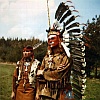
|
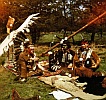
|
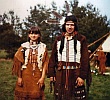
|
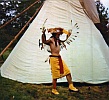
|

|
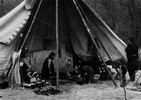
|
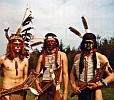
|

|
1985
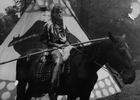
|

|
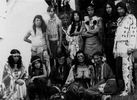
|
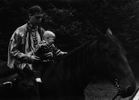
|
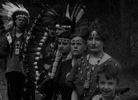
|
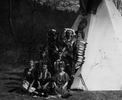
|
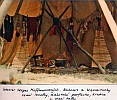
|
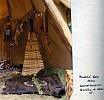
|
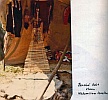
|
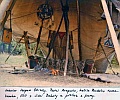
|

|
1986

|

|
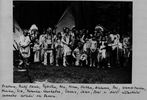
|
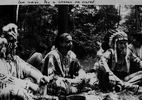
|
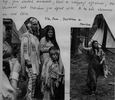
|

|
1987
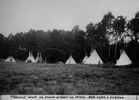
|
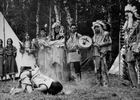
|
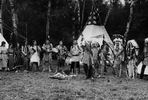
|
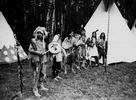
|
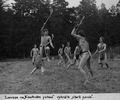
|
1988
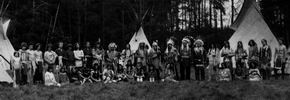
|
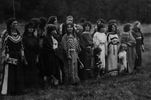
|
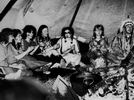
|

|
|

|
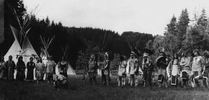
|

|
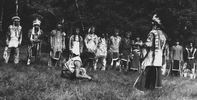
|
|
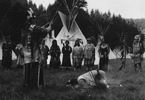
|
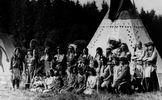
|

|
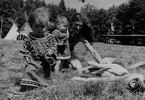
|
|
The impact of Native American, mostly Lakota, religion has to be mentioned, treasured books by Black Elk or John Fire Lame Deer have been smuggled over the nearly impenetrable border, translated and manually rewritten copies then passed many a hand and found a resonating response in many hearts. In dumbing silence of information influx tapped by the communist government every newly discovered information was a community treasure.
In 1989, the communist regime fell and liberty opened vast possibilities, including freedom to form or enter any organization. In cooperation with the Pony Express riders and western riders who formed the Pony Express Corral of the Westerners International organization, the Indian Corral was founded. Part of hobbyists dissatisfied with this inclusion process did not follow the mainstream and kept their independence with occasional camps and pow-wows like "Meeting In the West" and others.
Major event organized by Indian Corral is annual summer camp taking place every year at a different place. The largest camp with 44 tipis took place in 1992 with the climax presented by visiting of a Canadian TV team and Cree medicinemen White Bear and Wawa in frameworks of making a TV documentary on Czechoslovak hobbyists. This was one of the first real contacts with true Native American world. Next organized event is a General Council twice a year that evolved with time into a 3-day stormy meeting with elections, presentations on various anthropological and historical topics, beadwork-quillwork-rawhidework contests, exhibits, dances, informal gatherings etc.
1994
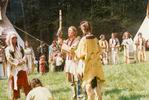
|
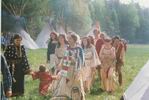
|
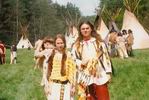
|

|
1995
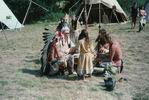
|

|

|
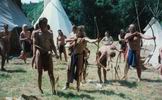
|

|

|
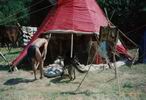
|
High quality and relatively low prices of the Native American- style fashion and utensils led to establishing of commerce among some craftworkers who produce beadwork, quillwork and other crafts predominantly for the German Indian hobby market. The best pieces can be seen in museums elsewhere in the world. As a protest against these businness tendences ("Indian life was not made by just beading 12 hours a day") several groups left Indian Corral in 1993. For example Hayca Tiospaye, whose members have intense contacts with the Lakota people, several speak Lakota fluently and were adopted in prominent Lakota families.
Until 1996, the main program has been constituted by education and activities pertaining to the "old time", i.e. situation on the Plains before ca. 1890. In camp, replicas of original 19th century Plains Indian style clothing and utensils are used, atmosphere is constituted by constant buzz of working, cooking, chopping firewood, crier announcements of gatherings, games and sports, sweatlodge preparations, feasts, contests and celebrations, by drumming and singing or simple gossiping on the last camp news. Usually there are several horses in camp. Commonly there are more camp gatherings through all the year, either of members of one group for itself or more general.
The IC organized the first modern style pow-wow with guests from Germany, Slovakia and Native American friends in 1996. Some Czech hobbyists have close ties to their colleagues in Germany and the U.S. and take part in their Councils, lately some of them took part in Buffalo Days camps in the U.S. There are quite many Czech hobbyists who accomplished their dream and went to the United States, met the real Native Americans and confronted thus their imaged picture with reality, sometimes having to heavily adapt their rather naive image of what it truly means to be Native American.
Indian Corral of Westerners International has published following magazines: Indian Hobby Courier, Euroindian Magazine and Poselství světa v kruhu (Message of the Circle) that continues till now. All of them follow the thread that was started by the old Winaminge of the early 80´s mentioned above.
2000

|
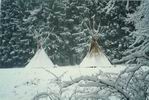
|
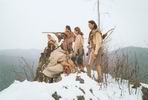
|
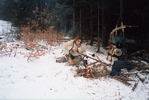
|
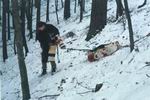
|
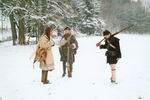
|
2002 - pow wow Hamiltony

|
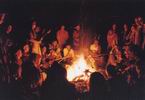
|
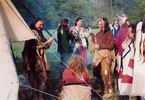
|

|

|

|
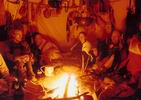
|

|
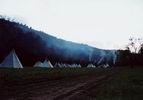
|
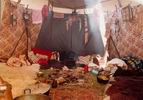
|

|

|

|
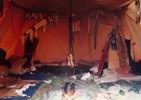
|

|
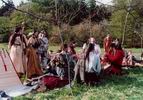
|
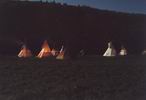
|

|

|

|
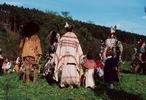
|

|
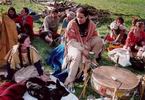
|
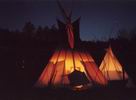
|

|
|||
Outside Indian Corral there were other formal or inofficial bodies, of course. The semi-official circle called Midewiwin, inspired by the Iroquois federation with their program constituted by a great deal by Seton´s woodcraft has been mentioned above. This organization is still active although not in the extent it had in the end of 80´s. One of the prominent "tribes" was Neskenon, on its heritage is currently published magazine "Wampum of Neskenon" that evolved into much broader-themed periodicum with time.
In 1990 the Woodcraft League has been reestablished with many of the groups called "tribes" dealing with Indian hobby to various extent. WL is rather active, it publishes the magazine "Buffalo Wind", books on woodcraft, history, E.T.Seton and his life, successful was a handbook "Camping in Tipi" published as a 2nd edition in 2002. WL also kindly hosts this site.
Various smaller groups and individuals exist in other organizations (Pionyr, YMCA, Turisticke oddily mladeze (TOM), Tabornicka Unie, …) or indpendently.
Thanks to all those named or unnamed who shared their memories, knowledge and pictures that helped to establish this text and picture gallery and to all those who have cleared the path but are already not able to see the fruits of their effort. We are constantly working on adding new pictures to the site and to slowly fill in the inevitable gaps. It takes time to obtain old chronicles and to dig through cardboards with unsorted photograps, keep checking the site.
And, in the end, let us thank to the Indian people of both Americas whose courage, pride, aesthetics, philosophy and strive to keep their freedom inspired and helped to many a white man on both sides of the Ocean.
Other pictures you can finde on these adress:
http://www.indiani.cz/web/stalose.php
http://www.indiancorral.cz/htm/IC.html
In the case of any inquiries, please, contact the webmastera.
Back to content


